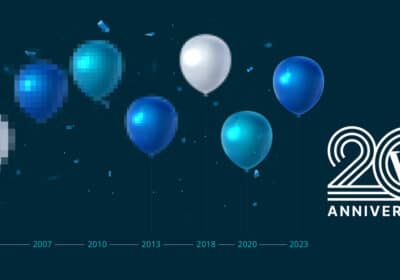Great pieces of writing are fulfilling to author and publish, even more so when they’re met with a positive reception.
But quality prose that doesn’t perform according to the cold math of social sharing and conversion, isn’t our job. Content marketing is only an effective strategy when it increases our bottom line and raises brand awareness.
A successful content strategy requires us to combine art and science. We must be proud of our output and effective at creating value.
You probably already have a natural affinity for the “art” side of the equation: the desire to create quality content, and an editorial process that works reasonably well. We’re going to shore up the science side of the equation; that’s the area where your journalism degree isn’t as helpful.
The following framework will help you execute intelligently, driven by data.
Consider two dimensions for any piece of content:
- How important is the substance of this content to the brand message or product promotion?
- How effective is this content in measurable terms that matter to the business (e.g. pageviews, uniques, social-shares, conversions to leads or sales)?
What you do with this information might surprise you.
Stop Investing
It’s obvious what to do with ineffective content that’s also not important to your mission. Just stop doing it! You might have some freelancers or other authors who should be reassigned to new topics or with whom you need to part ways.
While this sounds obvious, it can be surprising how much of our content falls into this category. Sometimes the unimportant messages are easiest to write about, so authors can lean on it too much. Sometimes our ability to measure the effectiveness of topic-categories is too weak, so we’re being ineffective with that topic without even knowing it.
Sometimes it takes conscious attention to identify something that sounds trite on paper and to be disciplined and always ask yourself, “Why am I creating this content?
Double-Down
It’s also obvious that effective, important content is an area to invest more heavily in. Track metrics like type of content, day of week, authorship, article length, promotional mechanism, and target audience, to further hone in on what makes the best content work well.
Caution: It’s possible to go overboard.
Suppose you have a single topic which is hot in the market and for which you have excellent thought-leadership, so it’s always a popular piece. That’s great, and obviously you should beat that drum as often as feasible. But, consider all of your readers. Do all of them want to hear about this one topic all the time?
Could you in fact drive away important readers by maniacally chasing a single vein, even if that vein is indeed yielding gold? Make sure you keep your entire audience in mind as you continue to experiment in the as-yet-less-successful content areas.
Focus & Improve
This can be a tricky category, because when you see that a category of content isn’t being effective, the reaction can be “Stop producing that sort of content.” And certainly, you shouldn’t fulfill the cliché definition of insanity by repeating the same action expecting different results.
However, you do need to spend extra time experimenting to make this messaging successful. If it’s important that the market appreciate a pillar of your brand messaging, or that prospective buyers appreciate some facet of the product, and you’re not causing that message to resonate enough to solicit shares and conversions, that’s an area that needs special attention.
It’s a Trap!
This is the hardest to action. The content is working, you think — we’re getting clicks, we’re getting shares! People love us! This is how online publishing is supposed to feel! But it’s a trap.
It’s a trap because if you’re critical about it — the content doesn’t yield a good answer to the fundamental question of “Why am I creating this content?” The message isn’t relevant. It’s not promoting your brand or product. People may like it, but it’s not impacting the business. They’re not buying more stuff or being imprinted with an ingredient in the brand.
If our job were only to generate eyeballs, we would write lists of crazy celebrity photos that you just won’t believe. But we all know that’s not our job. So we have to see through the glitzy numbers. Don’t confuse something that’s interesting with something that’s meaningful.
Does that mean all less-relevant, high-performance content is bad? No, actually. There’s nothing wrong with publishing stuff people like that’s only tangentially relevant yet might entice some folks to push through into the meatier stuff.
What it does mean is that you need to sprinkle this content into the mix, rather than rely on it, and to recognize that it is bait but not the hook, useful as an ingredient in the content strategy cake but not the business value that you’re responsible for creating.
Connecting the dots with an Agile Approach
A holistic content strategy is difficult to pull off. You can’t publish garbage just to get views, but views do need to be gotten. You have business value to create and an agenda to execute against, but the artist in you needs to be proud of the results.
Furthermore, the landscape around you is changing. The topics people consider “hot” changes like fashion, the competitive content landscape morphs, the gatekeepers like Google and Facebook retool their algorithms, and your company evolves. Fundamentally, each piece of content carries an obvious risk that the return on the asset will not be worth the investment/time we put into it.
In an uncertain and changing world, you need processes and mindsets that work well with change. Agile methodologies help keep brands flexible and allow them to adapt to digital changes and trends to stay competitive.
To create an agile content strategy:
- Prioritize content connected to strategic long-term business goals
- “Sprint” focus on prioritized content tasks
- Refine the content based on metrics
In this way, agile allows for quick experimentation, which should be valued because it’s the only way to discover truly new things. Even failed experiments should be considered learning rather than failures. If we punish failure — even repeated failure — we kill creativity and risk-taking, which ultimately means we cannot innovate.
As the saying goes: Take risks: if you win, you will be happy; if you lose, you will be wise.
Taken too far, agile can turn into chaos — tons of experiments, little process, uncertain what it is that we’ve “learned.” That’s where frameworks like this one comes in. You can use this as a guide, taking the result of your content — each one a little experiment unto itself — and decide what you’re going to do with it, or what the totality of experiments over a month is telling you, and how to react.
It’s not an easy road, but it’s well worth it, especially when you out-perform your competitors.
In the modern world where content, not home pages, are shared and read, there is no other choice for digital marketers.





Join the conversation